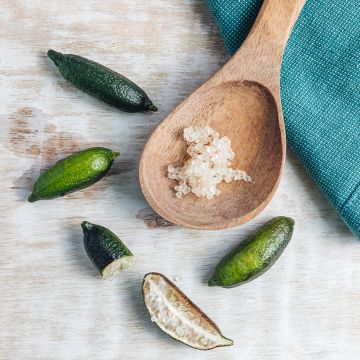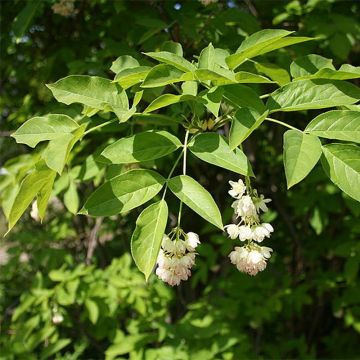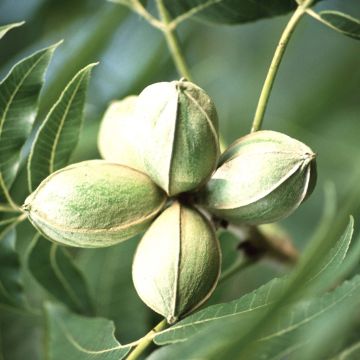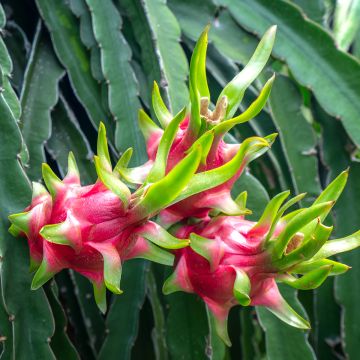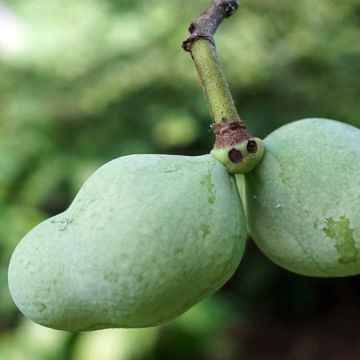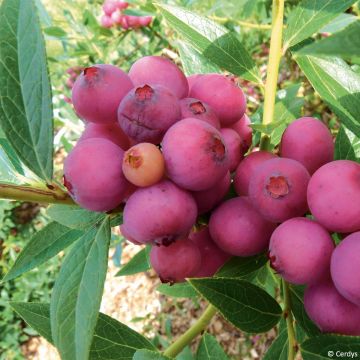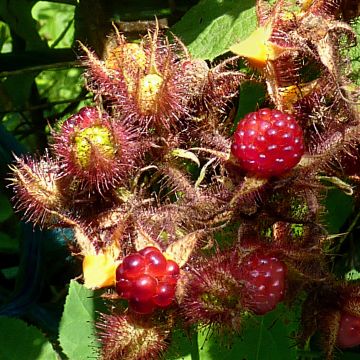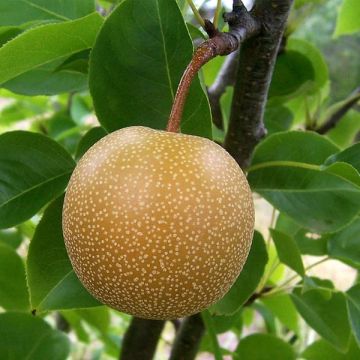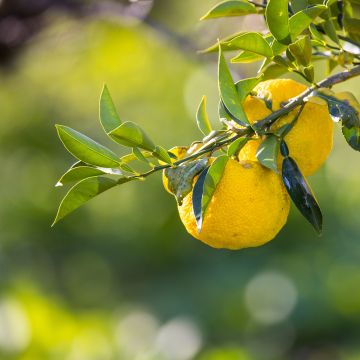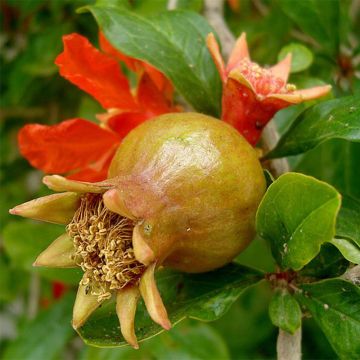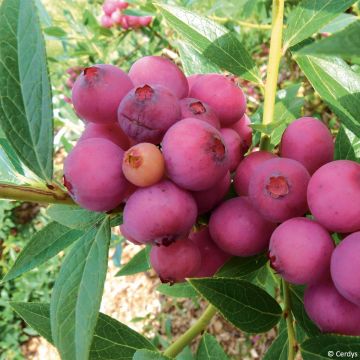Shipping country and language
Your country of residence may be:
Your country of residence is:
For a better user experience on our website, you can select:
Your shipping country:
Andorra
Austria
Belgium
Bulgaria
Canada
Chile
Croatia
Cyprus
Czechia
Denmark
Estonia
Finland
France
Germany
Greece
Hungary
Iceland
Ireland
Italy
Latvia
Lithuania
Luxembourg
Malta
Monaco
Netherlands
Poland
Portugal
Romania
Slovakia
Slovenia
Spain
Sweden
Switzerland
United Kingdom
We only deliver seed and bulb products to your country. If you add other products to your basket, they cannot be shipped.
Language:
French
German
Spanish
English
My Account
Hello
My wish lists
Plantfit
Log in / Register
Existing customer?
New customer?
Create an account to track your orders, access our customer service and, if you wish, make the most of our upcoming offers.
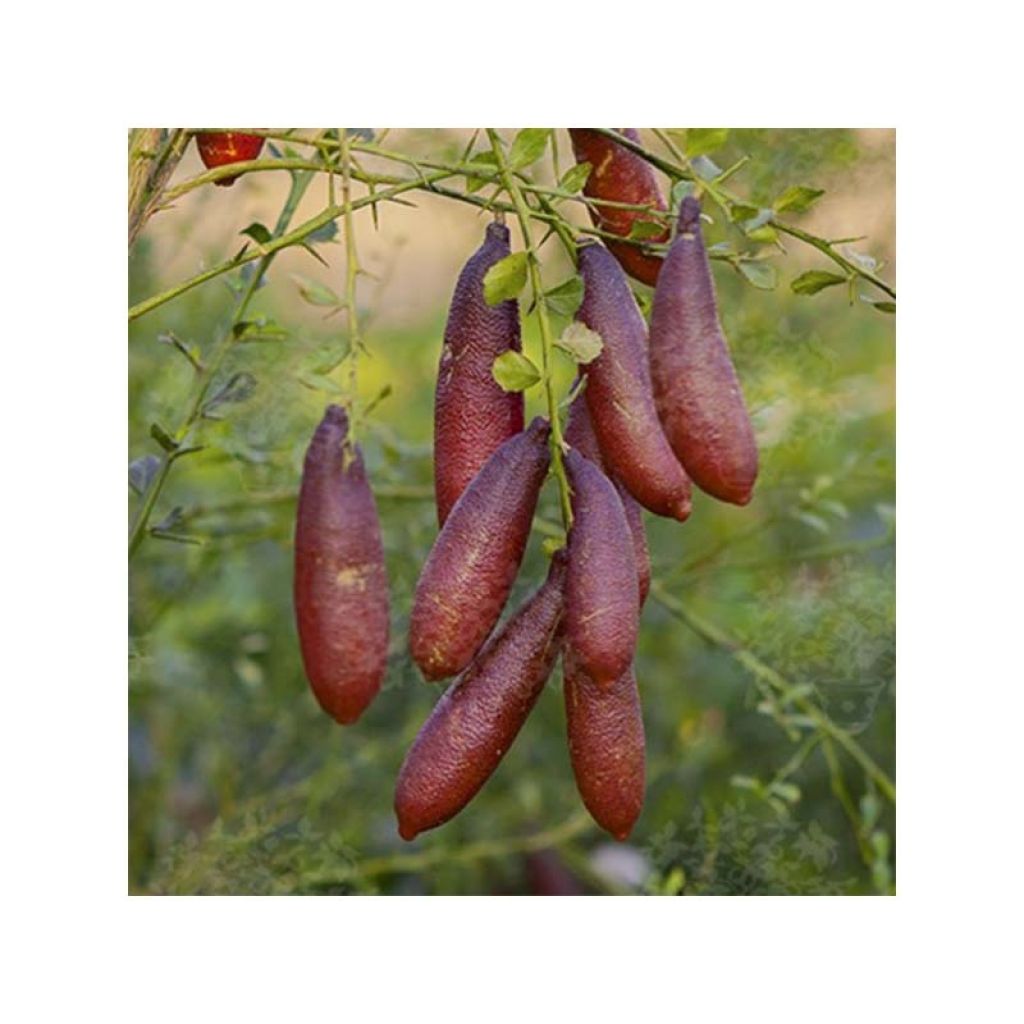

Black pearl finger lime (true caviar) - Microcitrus australasica
Black pearl finger lime (true caviar) - Microcitrus australasica
Microcitrus australasica
Australian finger lime, finger lime
Order in the next for dispatch today!
Dispatch by letter from €3.90.
Delivery charge from €5.90 Oversize package delivery charge from €6.90.
More information
This item is not available in your country.
Schedule delivery date,
and select date in basket
This plant carries a 6 months recovery warranty
More information
We guarantee the quality of our plants for a full growing cycle, and will replace at our expense any plant that fails to recover under normal climatic and planting conditions.
From €5.90 for pickup delivery and €6.90 for home delivery
Express home delivery from €8.90.
Description
The Caviar Lime, Microcitrus or Citrus australasica in Latin, also exists in a black-seeded version that will surprise on the plate as much as in the mouth. Rare and sought after, this trendy citrus fruit that top Chefs from around the world are clamoring for is still little known among amateur gardeners, despite its playful appearance and compact growth, well suited to pot cultivation. This small Australian lemon tree produces small white or pink, fragrant flowers, followed by elongated fruits. Under their fragrant skin lies the 'caviar', small translucent beads that reveal delicious tangy and aromatic flavors. This chic and unusual citrus fruit will be cultivated in a large container to be stored in a greenhouse during winter, or in open ground in warm regions that are spared from severe frosts.
The Citrus or Microcitrus australasica is also known as the 'finger lime' or 'Australian finger lime' due to the appearance of the size of its fruits, which can also resemble pickles.
It is a small thorny bush from the Rutaceae family, with a rather upright bushy habit. It is native to the east of Australia, a mild and highly rainy region. In nature, it grows in plain areas, in the undergrowth of humid forests. The natural variability of this species has allowed for the selection of different varieties of different colours, offered in cultivation, among which some have been named and registered.
This small tree reaches a height of 3 m (10ft) and spreads over approximately 2 m (7ft) in open ground, but will remain smaller when grown in a pot. Not very hardy, it can be planted in open ground in a narrow strip along the Mediterranean coast. Elsewhere, it will be cultivated in a pot and stored as soon as the first frosts arrive. Cultivated for its leaves and fruits, the Caviar Lime blooms in March-April. It produces pink buds that open into small white to pink flowers, with a sweet and gourmand neroli fragrance, characteristic of Citrus. The fruiting process is quite slow in this citrus fruit, which needs time to reach maturity. The flowers give way to cylindrical, finger-shaped fruits, measuring 4 to 8 cm (2 to 3in) long. The skin of the mature fruits can have various shades, from green to almost black, passing through red, purple, and brown. They contain small, juicy, and crunchy vesicles that naturally detach from each other like caviar. The fruits are harvested from October to December. They enhance both savory and sweet dishes. The evergreen and aromatic leaves of this citrus fruit measure 1 cm (0in) to 6 cm (2in) long and 3 mm (0in) to 25 mm (1in) wide. They have a very delicate aromatic flavor, used as a spice.
The Citrus australasica is cultivated frost-free, in a slightly acidic, always moist soil, and in a humid atmosphere, requirements that are easier to meet in a large pot. Cultivating it in open ground is almost a specialist affair for this species, which is sensitive to temperatures below -3°C (26.6°F). The Caviar Lime fruit is a refined and sought-after delicacy, with prices reaching several hundred euros per kilogram. Just like truffles, it should be used sparingly to decorate a plate or flavor a dish. This citrus-condiment brings a pleasant tangy and aromatic note to seafood such as oysters or almonds, for example. It pairs well with the flavor of scallops or salmon fillets prepared as carpaccio. Also incorporate some crunchy beads into fruit salads or cocktails.
Like all Citrus, the Microcitrus contains essential oil pouches in its leaves, flowers, and fruits, often visible to the naked eye, from which essential oil with anti-inflammatory and anti-rheumatic properties, as well as sedative properties, can be extracted by distillation (flowers and leaves) or by pressing (zest), allowing to fight against stress and insomnia. The fragrance of the essential oil is described as fresh, citrusy, tangy, with green notes.
Most citrus fruits thrive in open ground in Mediterranean coastal regions, where they find the necessary year-round warmth. But to bear fruit well, they must not lack water or nutrients. Not very hardy, the Caviar Lime begins to suffer from cold temperatures below -3°C (26.6°F). It is a self-fertile shrub, which means that a single individual is sufficient for complete pollination and fruiting.
Black pearl finger lime (true caviar) - Microcitrus australasica in pictures


Plant habit
Fruit
Flowering
Foliage
Botanical data
Microcitrus
australasica
Rutaceae
Australian finger lime, finger lime
Australia
Other Microcitrus - Finger Lime
Planting and care
Planting in open ground: Citrus trees appreciate fresh, neutral to slightly acidic and non-calcareous but fertile soil. It is only reasonable to plant them in open ground if you reside in a protected Mediterranean or Atlantic coastal area where the temperature does not drop below -4°C (24.8°F). The best time to plant is in early spring, in March and April. Be careful not to bury the collar. Citrus trees are naturally greedy and require water to bear fruit. In any case, consider amending the soil with well-decomposed compost or "special citrus" fertiliser. Choose a sunny but not scorching location for your bush, sheltered from the wind to prevent leaf drying and premature fruit drop. Place it in a location protected from sea spray.
Planting in pots: In all other regions, Microcitrus will be planted in a pot that can be kept in a greenhouse or a slightly heated conservatory, with a slightly humid atmosphere but frost-free at all times. It will appreciate being outdoors in summer. Planting in a pot or repotting should be done at the end of summer. Choose a pot slightly larger than the root system, as citrus trees do not like to feel cramped. Moisten the root ball well. To improve drainage, line the bottom of the pot with clay pebbles. Loosen the root ball and mix two-thirds garden soil (preferably non-calcareous) with one-third "special citrus" compost. Water thoroughly. Prefer pots made of breathable materials.
Citrus trees need a lot of water to thrive. Your Citrus caviar should be watered daily with slightly or non-calcareous water, and the soil should remain consistently moist. Similarly, make sure to regularly provide it with the necessary fertiliser: every 6 months for slow-release granular fertiliser, or every 3 waterings for liquid fertiliser.
Beware of attacks from the Australian scale insect (Icerya purchasi), which has taken up residence in our mild climate regions through imported plants from Australia.
Planting period
Intended location
Care
This item has not been reviewed yet - be the first to leave a review about it.
Unusual and exotic fruit trees
Haven't found what you were looking for?
Hardiness is the lowest winter temperature a plant can endure without suffering serious damage or even dying. However, hardiness is affected by location (a sheltered area, such as a patio), protection (winter cover) and soil type (hardiness is improved by well-drained soil).

Photo Sharing Terms & Conditions
In order to encourage gardeners to interact and share their experiences, Promesse de fleurs offers various media enabling content to be uploaded onto its Site - in particular via the ‘Photo sharing’ module.
The User agrees to refrain from:
- Posting any content that is illegal, prejudicial, insulting, racist, inciteful to hatred, revisionist, contrary to public decency, that infringes on privacy or on the privacy rights of third parties, in particular the publicity rights of persons and goods, intellectual property rights, or the right to privacy.
- Submitting content on behalf of a third party;
- Impersonate the identity of a third party and/or publish any personal information about a third party;
In general, the User undertakes to refrain from any unethical behaviour.
All Content (in particular text, comments, files, images, photos, videos, creative works, etc.), which may be subject to property or intellectual property rights, image or other private rights, shall remain the property of the User, subject to the limited rights granted by the terms of the licence granted by Promesse de fleurs as stated below. Users are at liberty to publish or not to publish such Content on the Site, notably via the ‘Photo Sharing’ facility, and accept that this Content shall be made public and freely accessible, notably on the Internet.
Users further acknowledge, undertake to have ,and guarantee that they hold all necessary rights and permissions to publish such material on the Site, in particular with regard to the legislation in force pertaining to any privacy, property, intellectual property, image, or contractual rights, or rights of any other nature. By publishing such Content on the Site, Users acknowledge accepting full liability as publishers of the Content within the meaning of the law, and grant Promesse de fleurs, free of charge, an inclusive, worldwide licence for the said Content for the entire duration of its publication, including all reproduction, representation, up/downloading, displaying, performing, transmission, and storage rights.
Users also grant permission for their name to be linked to the Content and accept that this link may not always be made available.
By engaging in posting material, Users consent to their Content becoming automatically accessible on the Internet, in particular on other sites and/or blogs and/or web pages of the Promesse de fleurs site, including in particular social pages and the Promesse de fleurs catalogue.
Users may secure the removal of entrusted content free of charge by issuing a simple request via our contact form.
The flowering period indicated on our website applies to countries and regions located in USDA zone 8 (France, the United Kingdom, Ireland, the Netherlands, etc.)
It will vary according to where you live:
- In zones 9 to 10 (Italy, Spain, Greece, etc.), flowering will occur about 2 to 4 weeks earlier.
- In zones 6 to 7 (Germany, Poland, Slovenia, and lower mountainous regions), flowering will be delayed by 2 to 3 weeks.
- In zone 5 (Central Europe, Scandinavia), blooming will be delayed by 3 to 5 weeks.
In temperate climates, pruning of spring-flowering shrubs (forsythia, spireas, etc.) should be done just after flowering.
Pruning of summer-flowering shrubs (Indian Lilac, Perovskia, etc.) can be done in winter or spring.
In cold regions as well as with frost-sensitive plants, avoid pruning too early when severe frosts may still occur.
The planting period indicated on our website applies to countries and regions located in USDA zone 8 (France, United Kingdom, Ireland, Netherlands).
It will vary according to where you live:
- In Mediterranean zones (Marseille, Madrid, Milan, etc.), autumn and winter are the best planting periods.
- In continental zones (Strasbourg, Munich, Vienna, etc.), delay planting by 2 to 3 weeks in spring and bring it forward by 2 to 4 weeks in autumn.
- In mountainous regions (the Alps, Pyrenees, Carpathians, etc.), it is best to plant in late spring (May-June) or late summer (August-September).
The harvesting period indicated on our website applies to countries and regions in USDA zone 8 (France, England, Ireland, the Netherlands).
In colder areas (Scandinavia, Poland, Austria...) fruit and vegetable harvests are likely to be delayed by 3-4 weeks.
In warmer areas (Italy, Spain, Greece, etc.), harvesting will probably take place earlier, depending on weather conditions.
The sowing periods indicated on our website apply to countries and regions within USDA Zone 8 (France, UK, Ireland, Netherlands).
In colder areas (Scandinavia, Poland, Austria...), delay any outdoor sowing by 3-4 weeks, or sow under glass.
In warmer climes (Italy, Spain, Greece, etc.), bring outdoor sowing forward by a few weeks.
